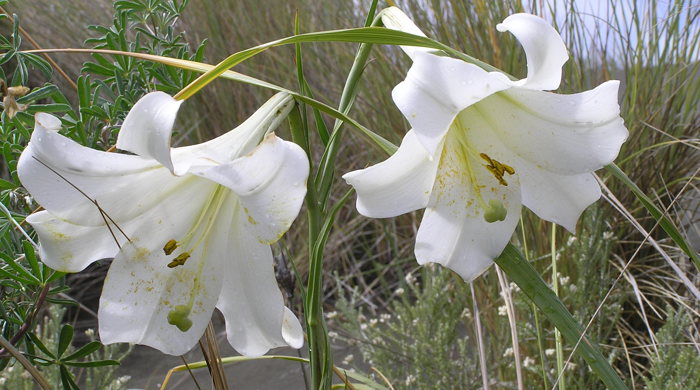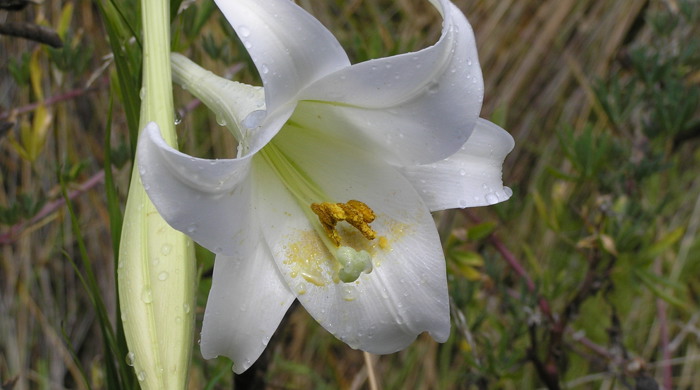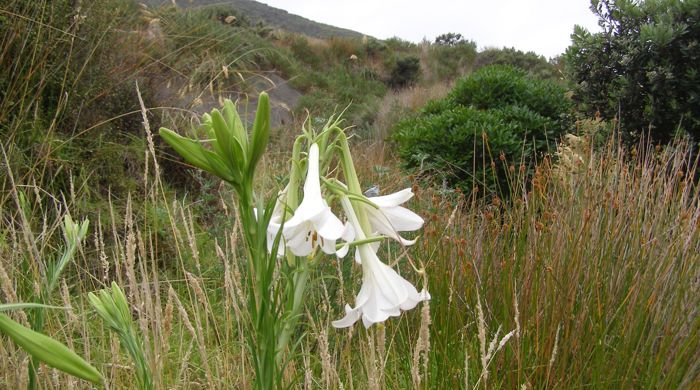Lilium formosanum
Formosa lily
Family: Liliaceae
Origin: Taiwan

Regional Pest Management Plan (RPMP) status
- National Pest Plant Accord Species
- Whole region — Sustained control
- Waitākere Ranges Heritage Area priority status
- Parkland with Significant Ecological Areas — Site-led (on-park and buffer)
General description
Perennial herb. Stem is erect, unbranched and < 1 m tall. Leaves are < 13 cm long. Flowers are large, trumpet-like, white/purple and mainly borne in January – March. Seed capsules are < 9 x 2 cm, cylindrical, mainly produced in February – April, and contain winged seeds.
What you need to know
To help protect our environment:
- You must not breed, distribute, release or sell Formosa lily. As Formosa lily is a National Pest Plant Accord species, these restrictions apply within the Auckland region and across the whole of New Zealand.
- You must not plant Formosa lily within the Auckland region, unless you are transferring an existing plant on your land to another location within the boundaries of the same property.
- You must destroy any Formosa lily on land that you occupy if it has been planted in breach of the above rules and you are directed to do so by an authorised person.
Transport corridor operators must destroy all Formosa lily before it sets seed on any transport land that is located within the buffer area of a park where Formosa lily is being managed. View a map of park buffers where this applies.
To find out more about how we’re protecting Auckland’s parkland from pest plants, visit our pest plant buffer pages.
Habitats
Coastal areas, sand dunes, cliffs, scrub, disturbed areas, roadsides, pasture, track sides, open canopies.
Dispersal
Seeds dispersed by wind and water. Vegetative spread from bulbs. Human-mediated dispersal through accidental transport and deliberate plantings.
Impact on environment
Forms dense stands. Competes with native plant species such as harakeke.
Control
Site Management
Follow up treated areas 3 times per year. Encourage natural regeneration of native plants or replant treated areas where possible after 2-3 treatments to establish dense ground cover and minimise reinvasion.
Recommended approaches
Physical control
Method: Dig out.
Plant parts requiring disposal: Seeds and bulbs.
Disposal options: Remove to greenwaste or landfill.
Biocontrol
Biocontrol is currently not available for this species.
Community agrichemical control recommendations
Certified Handler/Experienced agrichemical user: Foliar spray with 5g metsulfuron-methyl per 10L of water and 20ml penetrant.
Caution: When using any herbicide or pesticide please read the label thoroughly to ensure that all instructions and safety requirements are followed.






